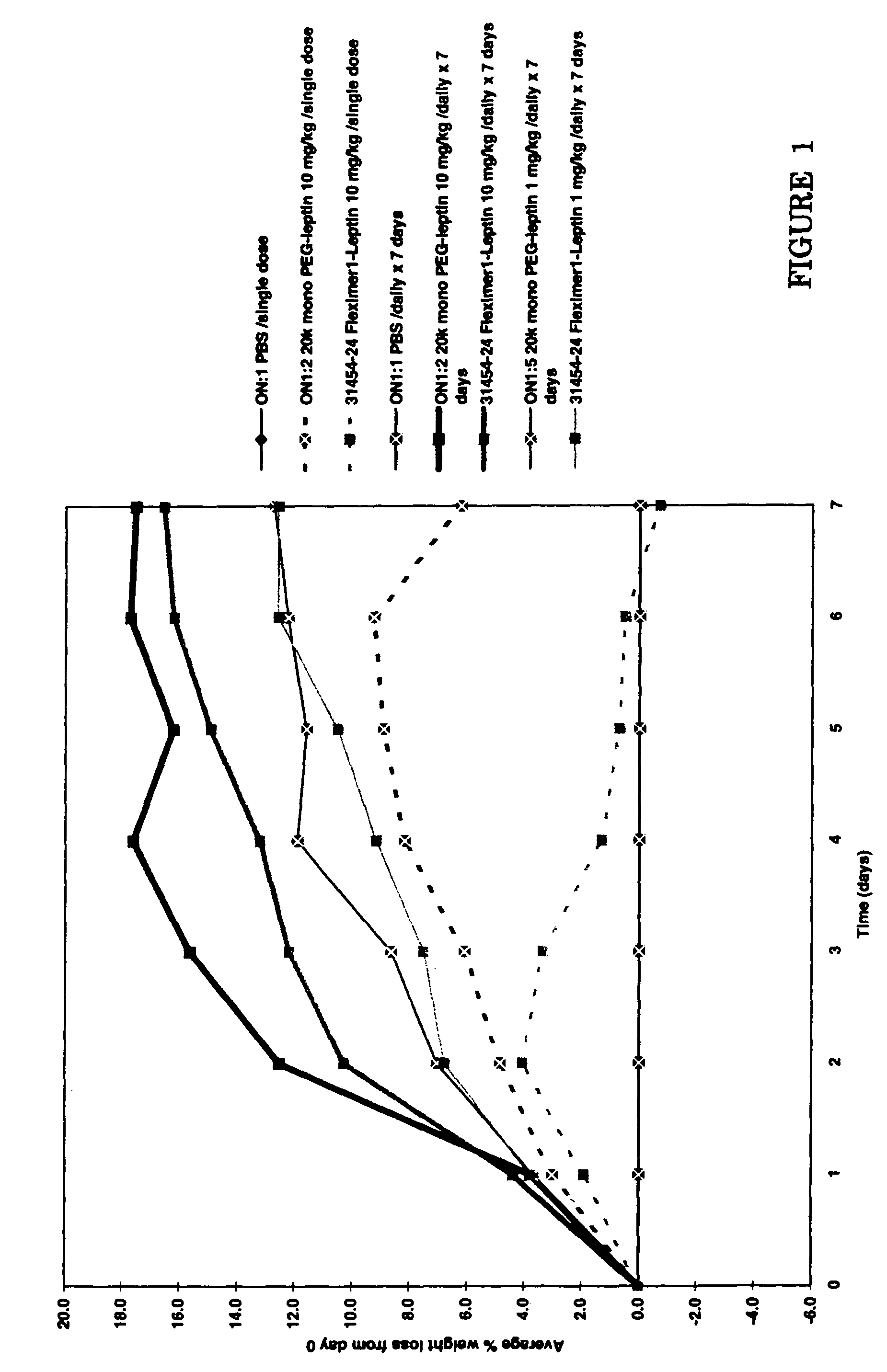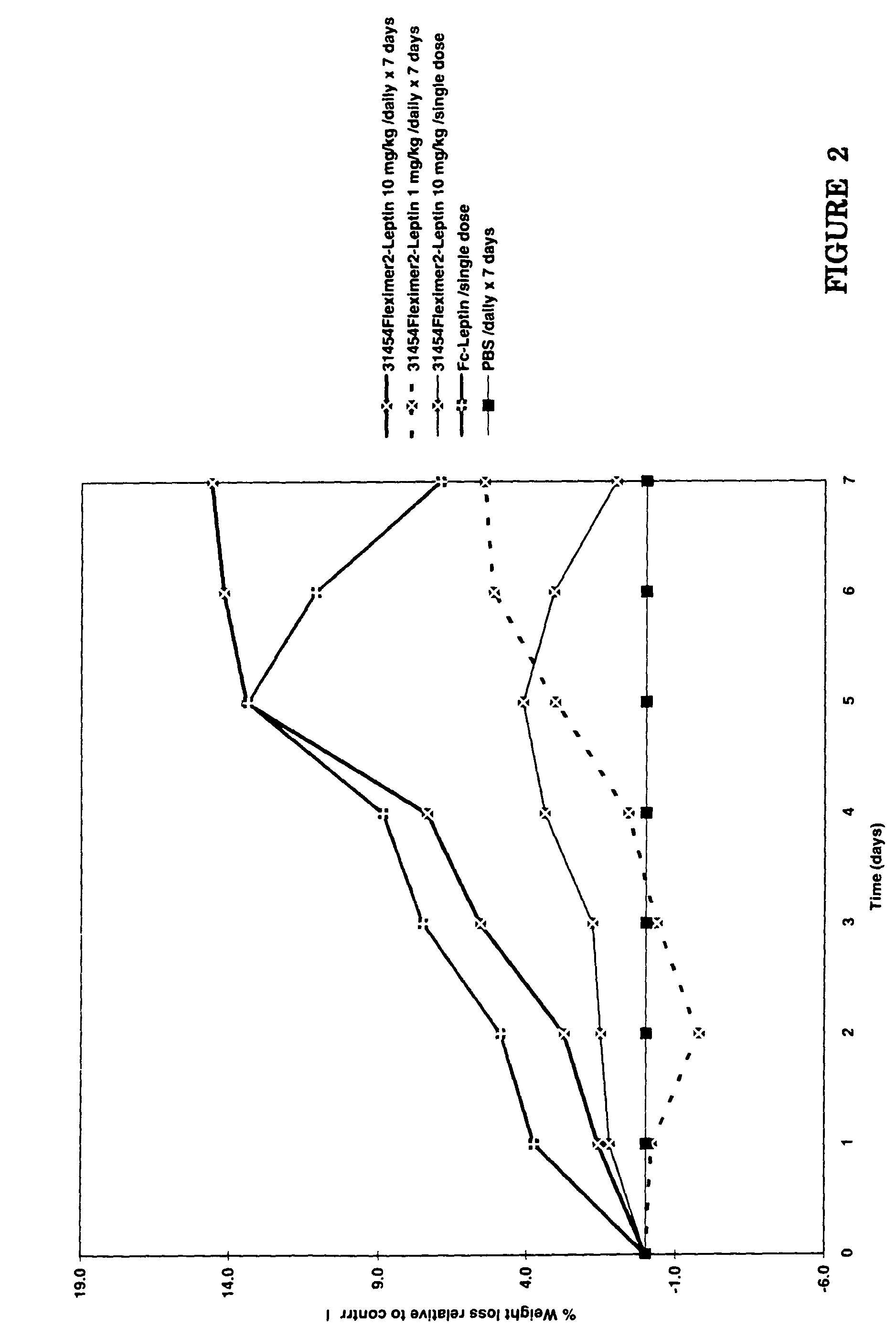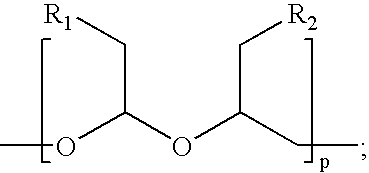Protein conjugates with a water-soluble biocompatible, biodegradable polymer
a biocompatible, biodegradable polymer technology, applied in the field of gene engineering and cell technology, can solve the problems of synthetic, non-biodegradable polymers, and high molecular weight accumulation, and achieve the effect of bioavailability and biocompatibility
- Summary
- Abstract
- Description
- Claims
- Application Information
AI Technical Summary
Benefits of technology
Problems solved by technology
Method used
Image
Examples
example 1
[0063]The water-soluble, biodegradable, biocompatible polymers, the ‘polyacetals’, contemplated for use in making conjugates of the present invention are those described in U.S. Pat. Nos. 5,811,510, 5,863,990, and 5,958,398. This example describes the synthesis of various biodegradable, biocompatible polyacetal derivatives, namely poly-(hydroxymethylene hydroxymethylformal) aldehyde and poly-(hydroxymethylene hydroxymethylformal) maleimide.
[0064]Synthesis of Fleximer1 (Maleimido-PHF1): PHF was prepared via exhaustive lateral cleavage of dextran B-512 by periodate oxidation. Dextran of Mn 20,000 Da (15 g) was dissolved in 30 mL of deionized water. Dextran solution was treated with 50 g of sodium metaperiodate dissolved in 1 L of deionized water on ice bath in a light protected reactor. The reaction mixture was incubated at 5° C. for 3 hours, and then at 25° C. for 10 hours. The reaction mixture was then filtered, desalted by flow dialysis, and treated with sodium borohydride (8 g) di...
example 2
[0067]This example describes the synthesis of various Fleximer1-leptin and Fleximer2-leptin conjugates. A recombinant methionyl human leptin analog, 78C-leptin, prepared as described in the Materials and Methods section below, was used for the conjugations.
Synthesis of Fleximer1-Leptin Conjugates
[0068]Preparation 1. 40.0 mg (2.48 μmol) of 78C-leptin (8.0 mL of a 5 mg / mL solution in 10 mM acetate pH 4) was diluted with 12 mL of maleimide buffer (20 mM phosphate pH 6.5 containing 5 mM EDTA) and the pH raised to 6.5 with NaOH. A solution of 40.0 mg (2.22 μmol) of Fleximer1 in 2.0 mL of maleimide buffer was added to the 78C-leptin solution and stirred in the cold room for 5 days.
[0069]The reaction mixture was then diluted with 23 mL of pH 3 water, the pH lowered to 3.5 with HCl and the mixture filtered through a 0.45 μm CA filter. The filtrate was loaded onto an SP16 FPLC column in 20 mM NaOAc pH 4 and eluted with a 0.5M NaCl gradient. Fractions 30–52 (184 mL) were combined, treated wit...
example 3
[0075]The in vivo efficacy of the Fleximer1-leptin conjugate and Fleximer2-leptin conjugate was tested in wild-type mice by monitoring weight loss relative to a buffer control. The Fleximer1-leptin preparation was tested vs. a 20 kDa monoPEG-leptin preparation and each preparation was administered at 1 mg / kg / single dose, 10 mg / kg / single dose, 1 mg / kg / daily for 7 days, and 10 mg / kg / daily for 7 days. The Fleximer2-leptin preparation (at 10 mg / kg / single dose, 1 mg / kg / daily for 7 days, and 10 mg / kg / daily for 7 days) was tested vs. an Fc-leptin preparation (10 mg / kg / single dose).
[0076]As depicted in FIG. 1, the Fleximer1-leptin preparation induced 12%–17% weight loss by day 7 when administered at 10 mg / kg. The 20 kDa monoPEG-leptin preparation was also effective in inducing weight loss in the model.
[0077]As depicted in FIG. 2, the Fleximer2-leptin preparation induced 14% weight loss by day 7 when administered at 10 mg / kg / daily for 7 days. The Fc-leptin preparation was also effective to s...
PUM
| Property | Measurement | Unit |
|---|---|---|
| molecular weight | aaaaa | aaaaa |
| molecular weight | aaaaa | aaaaa |
| molecular weight | aaaaa | aaaaa |
Abstract
Description
Claims
Application Information
 Login to View More
Login to View More - R&D
- Intellectual Property
- Life Sciences
- Materials
- Tech Scout
- Unparalleled Data Quality
- Higher Quality Content
- 60% Fewer Hallucinations
Browse by: Latest US Patents, China's latest patents, Technical Efficacy Thesaurus, Application Domain, Technology Topic, Popular Technical Reports.
© 2025 PatSnap. All rights reserved.Legal|Privacy policy|Modern Slavery Act Transparency Statement|Sitemap|About US| Contact US: help@patsnap.com



